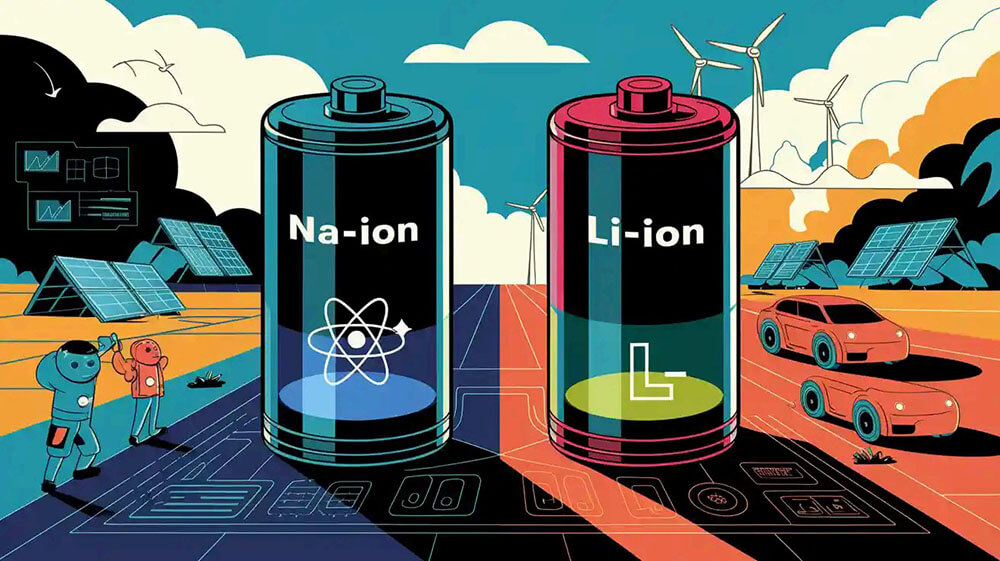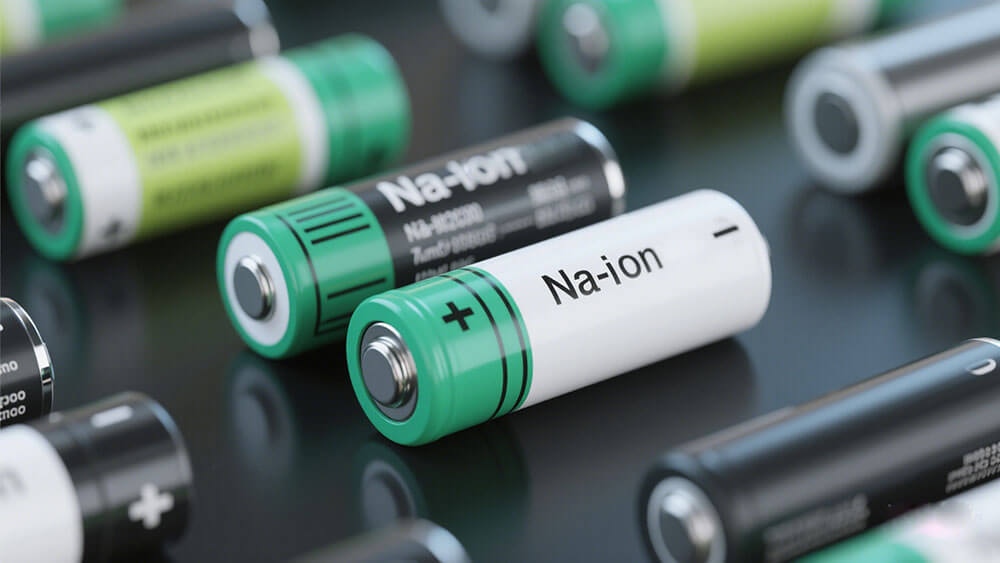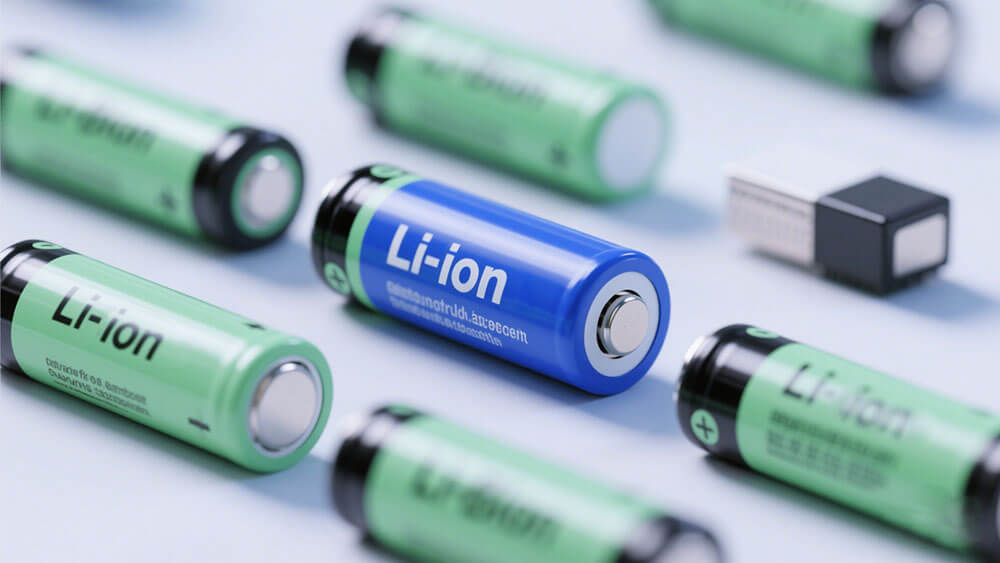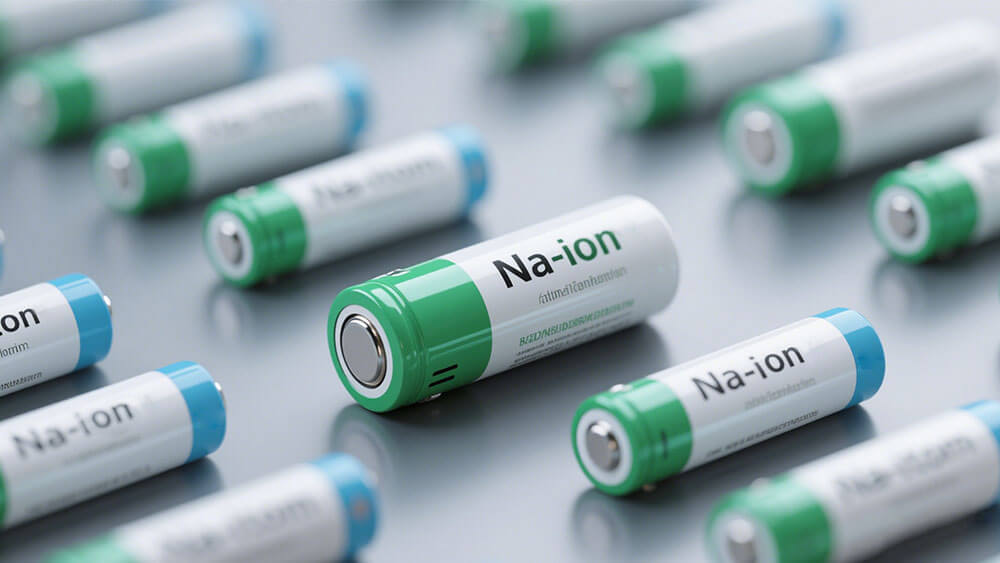Contents

The demand for efficient energy storage solutions continues to grow as industries prioritize sustainability and cost-effectiveness. Sodium-ion and lithium-ion batteries play a pivotal role in this evolution. Sodium-ion batteries, valued at $270.1 million in 2024, are expected to grow at a 26.1% CAGR, driven by their affordability and suitability for stationary storage. In contrast, lithium-ion batteries dominate high-performance applications like consumer electronics and robotics, owing to their superior energy density of 100–270 Wh/kg. Understanding the nuances of Na-ion vs Li-ion technologies helps businesses make informed decisions for diverse applications.
Key Takeaways
Sodium-ion batteries are cheaper because sodium is easy to find. They work well for storing energy on a large scale.
Lithium-ion batteries store more energy, so they are great for gadgets and robots that need high power.
Both types of batteries are important for clean energy. Sodium-ion batteries help the environment, while lithium-ion batteries give better performance.
Part 1: Overview of Sodium-ion and Lithium-ion Batteries

1.1 Sodium-ion Battery: Composition and Mechanism
Sodium-ion batteries rely on sodium ions (Na+) to store and transfer energy. These batteries use a cathode made of sodium-based compounds, such as sodium iron phosphate or layered oxides, and an anode typically composed of hard carbon. During charging, sodium ions move from the cathode to the anode through an electrolyte, which is often a liquid solution containing sodium salts. The reverse occurs during discharge, releasing energy.
One of the key advantages of sodium-ion batteries is the abundance of sodium resources, with sodium being 14,000 times more prevalent than lithium in the Earth’s crust. This abundance ensures a stable supply chain and reduces production costs. Sodium-ion batteries also exhibit enhanced safety due to their lower risk of thermal runaway, making them suitable for stationary energy storage and industrial applications.
1.2 Lithium-ion Battery: Composition and Mechanism
Lithium-ion batteries, widely used in consumer electronics, robotics, and medical devices, operate on a similar principle. They utilize lithium ions (Li+) to transfer energy between a cathode and an anode. Common cathode materials include NMC and LCO, while the anode is typically made of graphite. The electrolyte facilitates ion movement, ensuring efficient energy transfer.
Lithium-ion batteries are known for their high energy density, ranging from 120 Wh/kg to 270 Wh/kg, depending on the chemistry. For instance, NMC Lithium batteries offer energy densities of 160–270 Wh/kg, making them ideal for applications requiring compact and lightweight energy storage solutions. However, the limited availability of lithium resources (20 ppm in the Earth’s crust) poses challenges for long-term scalability.
1.3 Why Sodium-based Batteries Are Emerging as Alternatives
Sodium-based batteries are gaining traction as a sustainable and cost-effective alternative to lithium-based batteries. Sodium-ion cells are 20% to 30% cheaper than LiFePO4 Lithium batteries, primarily due to the lower cost of raw materials and simpler extraction processes. Additionally, sodium-ion batteries have a smaller environmental footprint, as sodium extraction is less invasive compared to lithium mining.
Despite their lower energy density (100–160 Wh/kg), sodium-ion batteries are expected to exceed 200 Wh/kg in the future, driven by advancements in material science. Their longer cycle life, with some models achieving 6,000 cycles at 80% capacity retention, further enhances their appeal for grid-scale energy storage and infrastructure projects. Analysts predict a strong market commitment, with 335.4 GWh of sodium-ion production capacity projected by 2030.
Tip: If you’re considering integrating sodium-ion or lithium-ion batteries into your operations, explore Large Power custom battery solutions for tailored recommendations.
Part 2: Key Differences Between Sodium-ion and Lithium-ion Batteries

2.1 Cost Efficiency: Sodium-ion vs Lithium-ion
Cost efficiency plays a critical role in determining the suitability of batteries for various applications. Sodium-ion batteries offer a significant advantage in this area due to the abundance of sodium resources. Sodium is approximately 1,180 times more prevalent in the Earth’s crust and 60,000 times more abundant in seawater compared to lithium. This abundance translates to lower raw material costs, making sodium-ion batteries more affordable to produce.
The rising cost of lithium, driven by its scarcity, further enhances the cost-effectiveness of sodium-ion batteries. As lithium prices continue to climb, sodium-ion technology becomes an increasingly attractive option for large-scale energy storage solutions.The rising cost of lithium, driven by its scarcity, further enhances the cost-effectiveness of sodium-ion batteries. As lithium prices continue to climb, sodium-ion technology becomes an increasingly attractive option for large-scale energy storage solutions.
2.2 Energy Density and Performance Comparison
Energy density directly impacts the performance of batteries, particularly in applications requiring compact and lightweight designs. Lithium-ion batteries excel in this area, offering energy densities ranging from 120 Wh/kg to 270 Wh/kg, depending on the chemistry. For example, NMC Lithium batteries provide energy densities of 160–270 Wh/kg, making them ideal for consumer electronics and robotics applications.
In contrast, sodium-ion batteries currently achieve energy densities between 100 Wh/kg and 160 Wh/kg. While this is lower than lithium-ion batteries, ongoing advancements in material science aim to push sodium-ion energy densities beyond 200 Wh/kg.
Metric | Sodium-Ion Batteries | Lithium-Ion Batteries |
|---|---|---|
Energy Density | Higher | |
Power Density | Lower | Higher |
Charging Speed | Faster | Slower |
Safety | Safer | Risk of explosion |
Sodium-ion batteries also charge faster than lithium-ion batteries, making them suitable for applications where quick energy replenishment is essential. However, their lower power density limits their use in high-performance scenarios like medical devices or robotics.
2.3 Safety and Stability in Battery Packs
Safety remains a top priority in battery technology, especially for applications in medical devices, security systems, and infrastructure. Sodium-ion batteries exhibit superior safety characteristics due to their lower risk of thermal runaway. They operate more stably under high temperatures, reducing the likelihood of overheating or explosion.
Lithium-ion batteries, particularly cobalt-based variants like LCO Lithium batteries, offer high energy density but come with safety risks. These batteries require advanced safety mechanisms, such as built-in protection circuits and thermal management systems, to mitigate the risk of fire or explosion.
Safety Features:
Sodium-ion batteries: inherently safer, minimal risk of thermal runaway.
Lithium-ion batteries: require additional safety mechanisms, such as CCC Certification and UN/DOT 38.3 standards, to ensure safe operation.
2.4 Environmental Impact and Sustainability
Sustainability is a growing concern in the energy storage industry. Sodium-ion batteries are more environmentally friendly due to the less invasive extraction processes for sodium compared to lithium mining. Sodium extraction consumes fewer resources and generates less waste, aligning with global sustainability goals.
Lifecycle assessments reveal that sodium-ion batteries have a smaller environmental footprint during production. However, they currently release more greenhouse gases than lithium-ion batteries due to the larger quantities of materials required to achieve comparable energy output. Over time, advancements in sodium-ion technology are expected to reduce these emissions.
For more insights into sustainable battery solutions, explore our sustainability initiatives.
2.5 Lifecycle and Durability Metrics
The durability of a battery determines its long-term value and suitability for industrial applications. Sodium-ion batteries demonstrate impressive cycle life, with some models achieving up to 6,000 cycles at 80% capacity retention. This makes them ideal for grid-scale energy storage and infrastructure projects.
Lithium-ion batteries, depending on their chemistry, offer varying cycle lives:
LCO Lithium batteries: 500–1,000 cycles.
NMC Lithium batteries: 1,000–2,000 cycles.
LiFePO4 Lithium batteries: 2,000–5,000 cycles.
While lithium-ion batteries provide higher energy density, sodium-ion batteries excel in longevity and cost-effectiveness, making them a viable alternative for applications where durability is critical.
Note: If you’re evaluating battery options for your business, consider Large Power custom battery solutions for expert guidance tailored to your needs.
Part 3: Challenges and Opportunities for Sodium-ion Batteries

3.1 Current Technological Limitations
Sodium-ion batteries face several challenges that hinder their widespread adoption. Their energy density, currently around 150 Wh/kg, remains lower than that of lithium-ion batteries, which can reach up to 260 Wh/kg. This limitation affects their suitability for applications requiring compact and lightweight designs, such as consumer electronics. The larger size and weight of sodium ions also necessitate more material and space to store the same charge, reducing overall performance. Additionally, improving conductivity and electrochemical stability remains a critical hurdle. These factors collectively limit the competitiveness of sodium-ion solutions in high-performance sectors like robotics and medical devices.
3.2 Innovations Driving Sodium-ion Battery Adoption
Despite these challenges, innovations are paving the way for sodium-ion batteries to gain traction. Programs like STEER have evaluated thousands of scenarios to identify promising technologies, guiding research and investment. Collaborations with institutions like Stanford focus on increasing energy density without relying on critical minerals, enhancing the competitiveness of sodium-ion batteries.
Innovation Case Study | Key Findings | Implications for Adoption |
|---|---|---|
STEER Program | Evaluated over 6,000 scenarios for sodium-ion potential | Guides research and investment |
Partnership with Stanford | Focus on increasing energy densities without critical minerals | Enhances competitiveness against lithium-ion batteries |
Market Analysis | Identified supply chain risks and market forces | Highlights need for strategic investments |
Experts like Adrian Yao emphasize the importance of reducing costs through engineering advances rather than just scaling production. These breakthroughs are critical for sodium-ion batteries to compete with lithium-ion battery technologies.
3.3 Market Potential and Industrial Adoption in 2025
The sodium-ion battery market is poised for significant growth, with a projected valuation of $1.73 billion by 2029 and a CAGR of 16.2%. This expansion is driven by increased production capabilities, advancements in energy storage systems, and growing demand in emerging markets. Energy storage deployment in these regions is expected to grow by over 40% annually until 2025, according to IRENA. Sodium-ion batteries, with their cost-effectiveness and raw material abundance, are well-positioned to meet this demand.
Their applications extend beyond stationary storage to include electric vehicles and industrial systems. This versatility enhances their appeal for businesses seeking sustainable and scalable energy solutions. If you’re exploring sodium-ion or lithium-ion battery integration, consider Large Power custom battery solutions for tailored recommendations.
Understanding the differences between sodium-ion and lithium-ion batteries is essential for optimizing energy storage solutions. Sodium-ion batteries offer cost efficiency and sustainability, while lithium-ion batteries excel in energy density and performance. For industrial applications, leveraging both technologies ensures adaptability. Explore custom battery solutions to meet your operational needs effectively in 2025.
Feature | Lithium-ion Batteries | Sodium-ion Batteries |
|---|---|---|
Environmental Impact | 8 million tons of waste globally; only 5% recycled | More environmentally friendly; abundant resources |
Cost | Higher production costs due to lithium scarcity | Cheaper materials; potentially lower production costs |
Energy Density | Higher energy density, suitable for compact devices | Lower energy density, limiting modern applications |
Safety | Risk of explosion or fire | Safer, less likely to explode or catch fire |
Abundance | Less abundant than sodium | 6th most abundant element in the earth’s crust |
Applications | Laptops, smartphones, electric vehicles | Grid-level energy storage systems |
Tip: Sodium-ion batteries are ideal for cost-sensitive projects, while lithium-ion batteries remain indispensable for high-performance applications like robotics and consumer electronics.
FAQ
1. What are the key applications of lithium-ion batteries in 2025?
Lithium-ion batteries dominate high-performance sectors like medical devices, robotics, security systems, and consumer electronics. Their energy density ensures optimal performance. Learn more about lithium-ion batteries.
2. How do sodium-ion batteries benefit industrial and infrastructure projects?
Sodium-ion batteries offer cost efficiency and longer cycle life, making them from Large Power ideal for industrial systems and infrastructure projects.
Why choose Large Power for custom battery solutions?
Large Power provides tailored solutions for diverse applications, ensuring optimal performance and sustainability. Visit Large Power custom battery solutions for expert recommendations.





